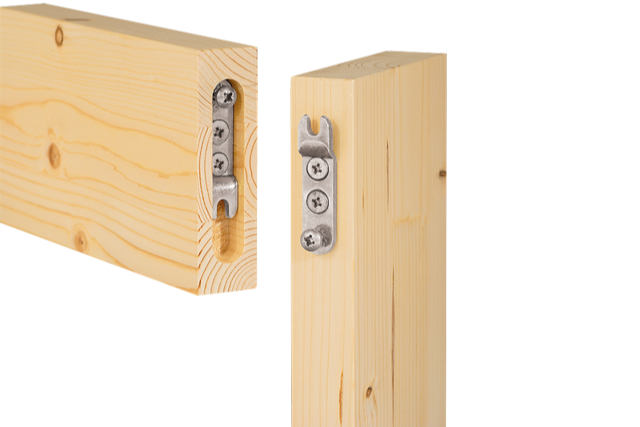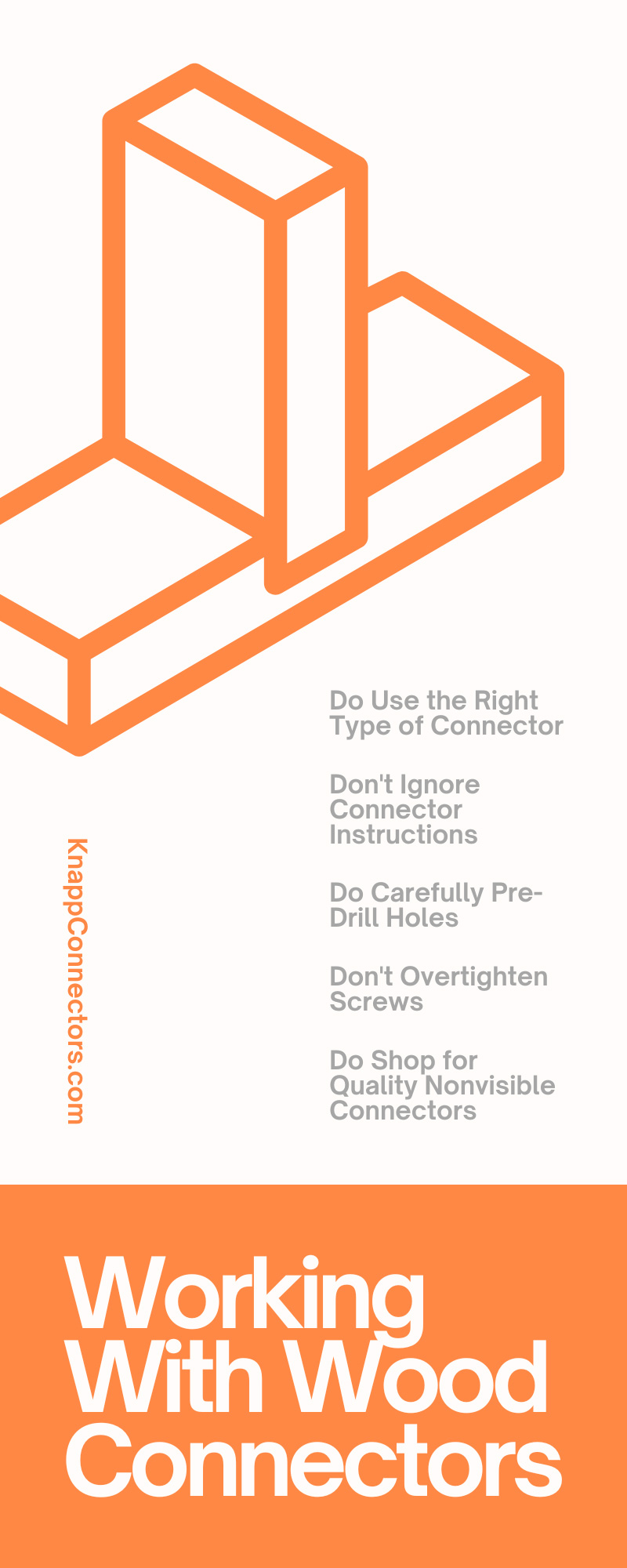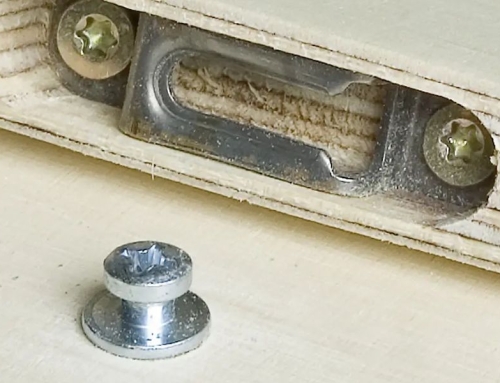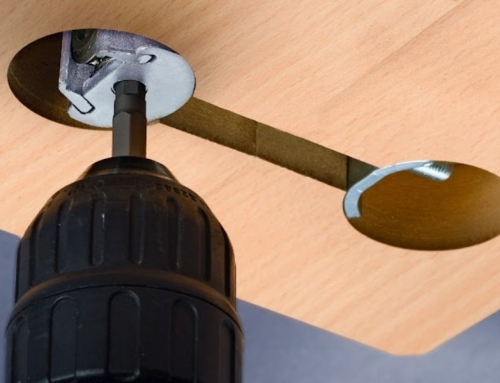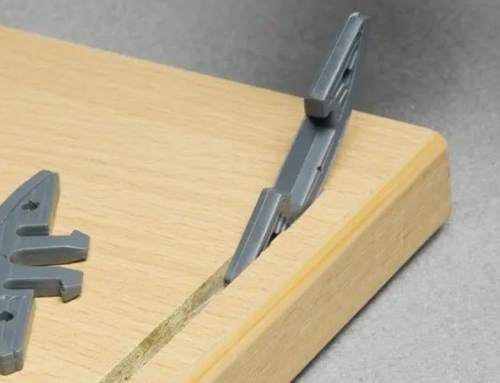If you’re planning on working with wood connectors, there are a few things you need to keep in mind. You should know which connectors you need for your project and how to install them. Furthermore, you want to use high-quality ones so that your structures stay together. Keep reading this guide on the dos and don’ts of working with wood connectors to learn more about this innovative essential.
Do Use the Right Type of Connector
To keep your project sturdy and attractive, you need to use the right nonvisible connector for woodworking. As you might guess, nonvisible connectors are visually hidden, providing a connection that holds your work together discreetly.
If you choose the wrong type of nonvisible connector or don’t secure it properly, your pieces might not line up correctly or could come apart entirely. The best way to avoid this mistake is to learn about connector types before beginning your project. You should know which nonvisible connector will work best for the wood you’re using and the overall design of your piece. With a little planning, you can ensure that your woodworking project will turn out just how you want it to.
Some common types of connectors include:
- Dowel connectors
- Biscuit connectors
- Hook connectors
- Dovetail connectors
- Single clip connectors
All sorts of industries within contract work benefit from various types of nonvisible connectors; you can use them for building decks, cabinets, furniture, stairs, etc. And it’s important to note that each nonvisible works differently, and the ideal option depends on the project you’ve planned and the industry you work in.
For example, biscuit connectors are common in furniture assembly, but hook connectors are ideal for cabinetry. Some manufacturers recommend using wood glue and nonvisible connectors to ensure everything remains in place, but this depends on the product.
Pro-Tip
Not sure which connector you should use? Quality manufacturers like Knapp provide the best applications for each of their wood-to-wood connectors in product descriptions. This bit of information ensures you make the best choice. We even tell you which connectors with which you should use wood glue to keep things in place.
Don’t Ignore Connector Instructions
It’s easy to overlook the nonvisible connector instructions for wood fasteners. It’s not that these instructions are hard to find; many of us simply may not think reviewing them is crucial to a perfect result. And yet, ignoring them can lead to problems down the road.
Nonvisible connector instructions provide critical information about how you should install them and how they’ll interact with the surrounding materials. Options like the biscuit connectors have cutting edges that slide themselves into biscuit cuts. But you need to read the user guide to know this, especially if it’s your first time using that type of wood connector.
Buying Tip
Knapp leads the industry for nonvisible connectors. We patented the connector spring in 1977 and haven’t stopped inventing since! We offer resources and guides so that all buyers know how to use their nonvisible connectors.
Do Carefully Pre-Drill Holes
When drilling or routing holes for the wood nonvisible connectors, you must take care to avoid damaging the material. The drill bit or router bit must be the correct size and type for the drilled or routed material, and the operator must not apply too much pressure. Additionally, it’s vital to ensure that the hole is in the correct location, as incorrect placement can result in an unstable joint. By taking these precautions, woodworkers can avoid problems when drilling or routing holes for nonvisible connectors.
When working with nonvisible connectors, you must also note that you’ll install these inside a wood project. Once you’ve installed all the parts and connected them, the pieces will have that seamless finish many strive for—there won’t be a nail or screw head in sight.
Pro-Tip
When most people think about pre-drilling, they associate it with woodworking projects like building a deck or fence. However, pre-drilling can also be incredibly helpful when hanging cabinets in your home. Creating a pilot hole before inserting the screws can prevent the wood from splitting. After crafting a beautiful cabinet, the last thing you want is for it to get damaged when you mount it.
Don’t Overtighten Screws
Predrilling holes is important, and so is ensuring you don’t overtighten screws when you place them. Why? Because doing this can split the wood, potentially leading to serious damage to the project. This is especially true when attaching nonvisible connectors, such as brackets or supports.
While it’s tempting to crank down on the screws to ensure they’re extra secure, this can put too much pressure on the wood and cause it to crack or break. Instead, it’s best to snug the screws down lightly, then use a level to make sure everything remains lined up correctly.
Once everything looks good, you can give the screws a final turn to ensure they’re nice and tight. By taking this care with your projects, you can avoid costly repairs. After all, the point of nonvisible connectors is to create a sleek finish, which is impossible if the wood has apparent cracks or splits.
Do Shop for Quality Nonvisible Connectors
When it comes to woodworking, the quality of your finished product is only as good as the quality of the materials you use. That’s why choosing only the best nonvisible connectors for your projects is critical.
Unlike visible fasteners, such as screws and nails, manufacturers design nonvisible connectors to remain hidden from view so that they won’t spoil the aesthetics of your work. Plus, they’re often stronger and more durable than visible fasteners, providing a more reliable connection between pieces of wood.
Shop at Knapp
By following these tips, you can ensure that your project looks polished and professional. Knapp sells top-quality wood connectors for various applications so that everyone, from professional woodworkers and contractors to DIYers, can buy the products they need. Now that you know the dos and don’ts of working with wood connectors, you can shop for the products you need to craft the perfect wood project.

